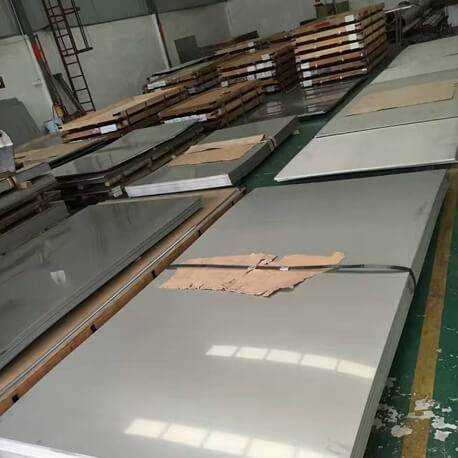A240 a203gr.a metal 15pc knife block
Other gases, such as sulfur dioxide, hydrogen sulfide, carbon monoxide, chlorine, additionally attack chrome steel. Resistance to different gases relies on the type of gas, the temperature, and the alloying content of the chrome steel. Stainless metal is now used as one of many materials for tramlinks, along with aluminium alloys and carbon metal.
A240 a203gr.a steel 2020
China United Iron and steel Limited export ASTM A203/A203M Nickel-Alloy steel plate of A203GR.A,ASTM A203GR.A,A203GR.A Steel,A203GR.A HIC,A203GR.A NACE. If you have inquiry for that, please contact us by admin@corten-asteel.com
A240 a203gr.a steel plate 1/4 inch

The minimal 10.5% chromium in stainless steels provides resistance to approximately seven hundred °C (1,300 °F), while 16% chromium provides resistance up to roughly ASTM A203GR.A Nickel-Alloy steel plate 1,200 °C (2,200 °F). Type 304, the commonest grade of stainless steel with 18% chromium, is immune to roughly 870 °C (1,600 °F).
Unlike carbon steel, stainless steels don’t undergo uniform corrosion when uncovered to wet environments. Unprotected carbon steel rusts readily when uncovered to a combination of air and moisture. The ensuing iron oxide surface layer is porous and fragile. In addition, as iron oxide occupies a bigger volume than the unique metal, this layer expands and tends to flake and fall away, exposing the underlying metal to further assault.
Duplex grades tend to be preferred because of their corrosion resistance and higher power, permitting a discount of weight and a long life in maritime environments. Stainless steels have a protracted historical past of utility involved with water as a result of their excellent corrosion resistance. Applications include a range of conditions including plumbing, potable water and wastewater remedy, desalination, and brine therapy. Types 304 and 316 stainless steels are standard materials of development involved with water.
- The minimal 10.5% chromium in stainless steels provides resistance to approximately 700 °C (1,300 °F), while 16% chromium provides resistance up to roughly 1,200 °C (2,200 °F).
- Type 304, the commonest grade of stainless steel with 18% chromium, is proof against approximately 870 °C (1,600 °F).
- Other gases, corresponding to sulfur dioxide, hydrogen sulfide, carbon monoxide, chlorine, additionally attack stainless steel.
What are standard plate sizes?
Size and type Bread and butter plate: small (about 6–7 inches (15–18 cm)) for individual servings. Lunch or dessert plates (typically 9 inches (23 cm)) Dinner plates: large (10–12 inches (25–30 cm)), including buffet plates, serving plates which tend to be larger (11–14 inches (28–36 cm))
However, with increasing chloride contents, greater alloyed stainless steels such as Type 2205 and tremendous austenitic and tremendous duplex stainless steels are used. The properties of duplex stainless steels are achieved with an overall decrease alloy content material than related-performing super-austenitic grades, making their use price-effective for a lot of purposes.
What is steel plate?
Steel Plate, or structural steel is simply steel sheet material that can be customarily cut and welded to develop a more elaborate product. It is made by compressing multiple steel layers together into one; forming a plate of steel. Applications for Steel Plate are based acutely on the specifics of the project.
A240 a203gr.a metal plate 4×8 price
The pulp and paper business was one of many first to extensively use duplex chrome steel. Today, the oil and gasoline business is the most important person and has pushed for extra corrosion resistant grades, leading to the development of tremendous duplex and hyper duplex grades.
Type 304 and Type 316 stainless steels are unaffected weak bases similar to ammonium hydroxide, even in high concentrations and at high temperatures. The identical grades uncovered to stronger bases similar to sodium hydroxide at excessive concentrations and high temperatures will probably experience some etching and cracking. Increasing chromium and nickel contents provide increased resistance.
